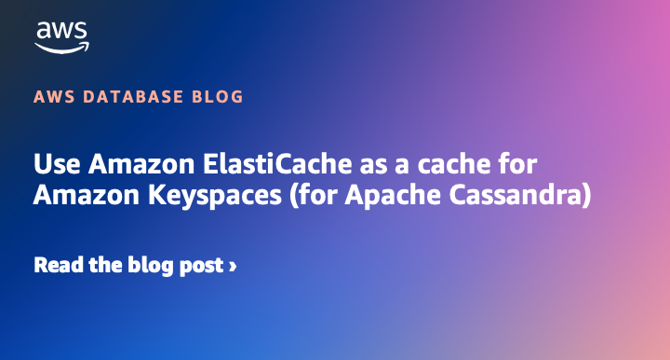Amazon
1M
162

Image Credit: Amazon
Use Amazon ElastiCache as a cache for Amazon Keyspaces (for Apache Cassandra)
- This post explains how Amazon ElastiCache can be used as a write-through cache for read-intensive and cost-sensitive applications that store data in Amazon Keyspaces and may need submillisecond read response times.
- The post uses a Cassandra Python client driver for accessing Amazon Keyspaces programmatically and a Redis client to connect to the ElastiCache cluster. The write-through caching strategy and lazy loading are used in the code provided in the post.
- The post provides the following sample code snippets for Amazon Keyspaces operations, including for single-row INSERT and DELETE operations, retrieving a single book award by primary key, and retrieving a result set based on multiple parameters.
- The post also suggests more options to cache data based on the nature of your access patterns, such as caching results based on partition key values only, sorting all key parameters in an order and hashing them, or sorting all query parameters and filters in an order and hashing them.
- Implementing ElastiCache can help decrease read latency to submillisecond values, increase read throughput, and scale for higher loads without increasing costs for backend databases.
- For more information and best practices on data modeling for Amazon Keyspaces, refer to the post linked within the summary.
- Juhi Patil, a NoSQL Specialist Solutions Architect based in London, wrote the post to help customers design, evaluate, and optimize their Amazon Keyspaces and Amazon DynamoDB based solutions.
Read Full Article
9 Likes
For uninterrupted reading, download the app